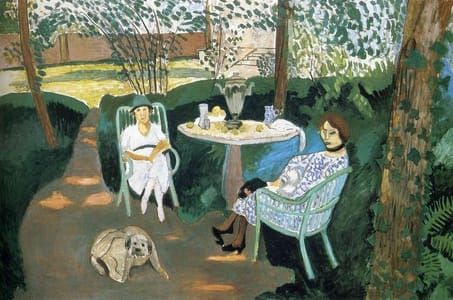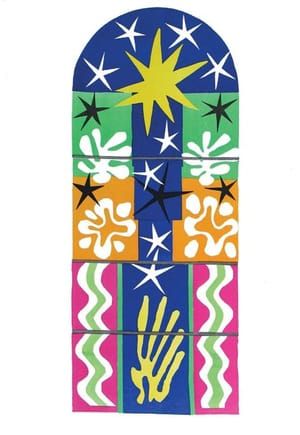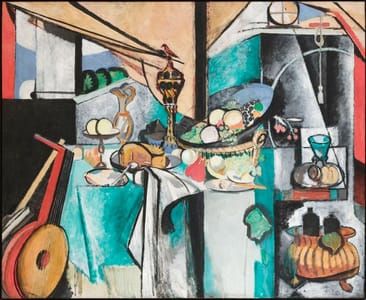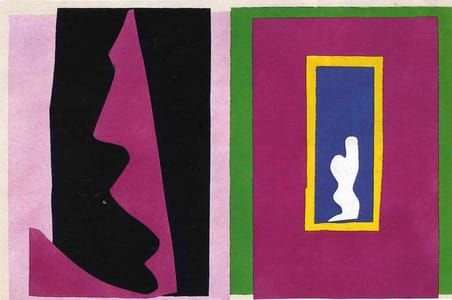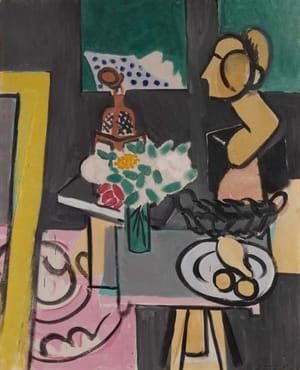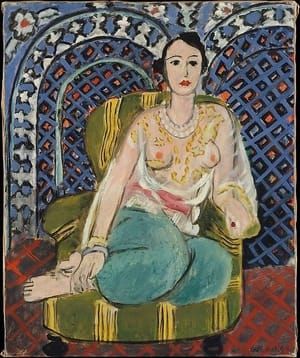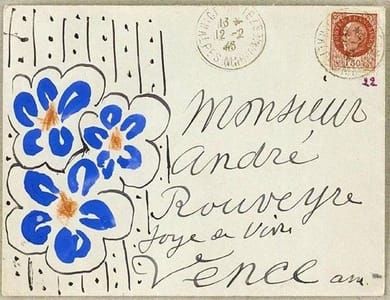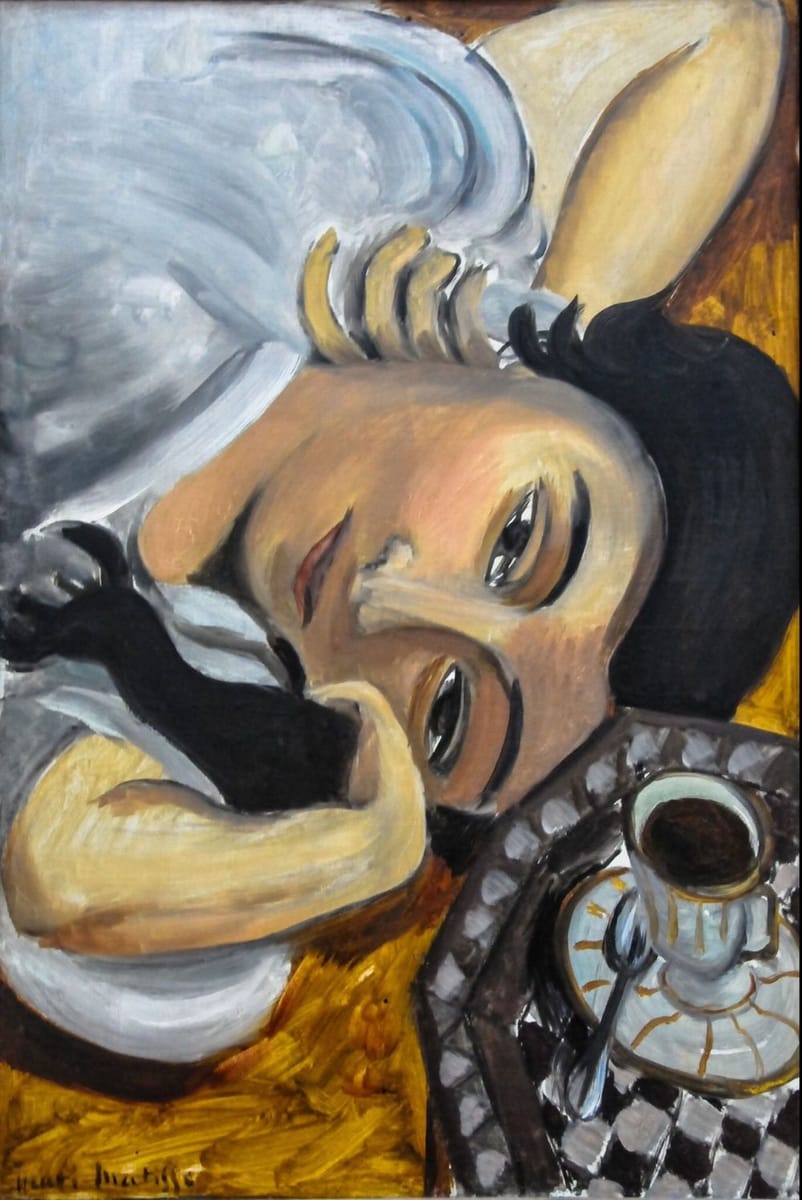

Lorette with Cup of Coffee, 1917
Henri Matisse
Lorette with a Cup of Coffee shows a close-up view, seen from above. The checkerboard pattern of a small hexagonal wooden table with a mother-of-pearl inlay (early 20th century, Musée Matisse, Nice), likely of Tunisian origin, is visible in the lower right of the painting. The visual similarities of the model and the table—both painted with cool silver-whites, dark browns and blacks—compress the space of the intimate painting.
[http://arthistorynewsreport.blogspot.nl/2017/05/matisse-in-studio.html]
In later works from the 1920s, the complex patterns from Matisse’s objects would not just complement figures, but also provide the overall frame through which figures are seen and, in some cases, structure the entire composition.
[http://arthistorynewsreport.blogspot.nl/2017/05/matisse-in-studio.html]
Uploaded on Aug 10, 2015 by Suzan Hamer
Henri Matisse
artistArthur
Wait what?

